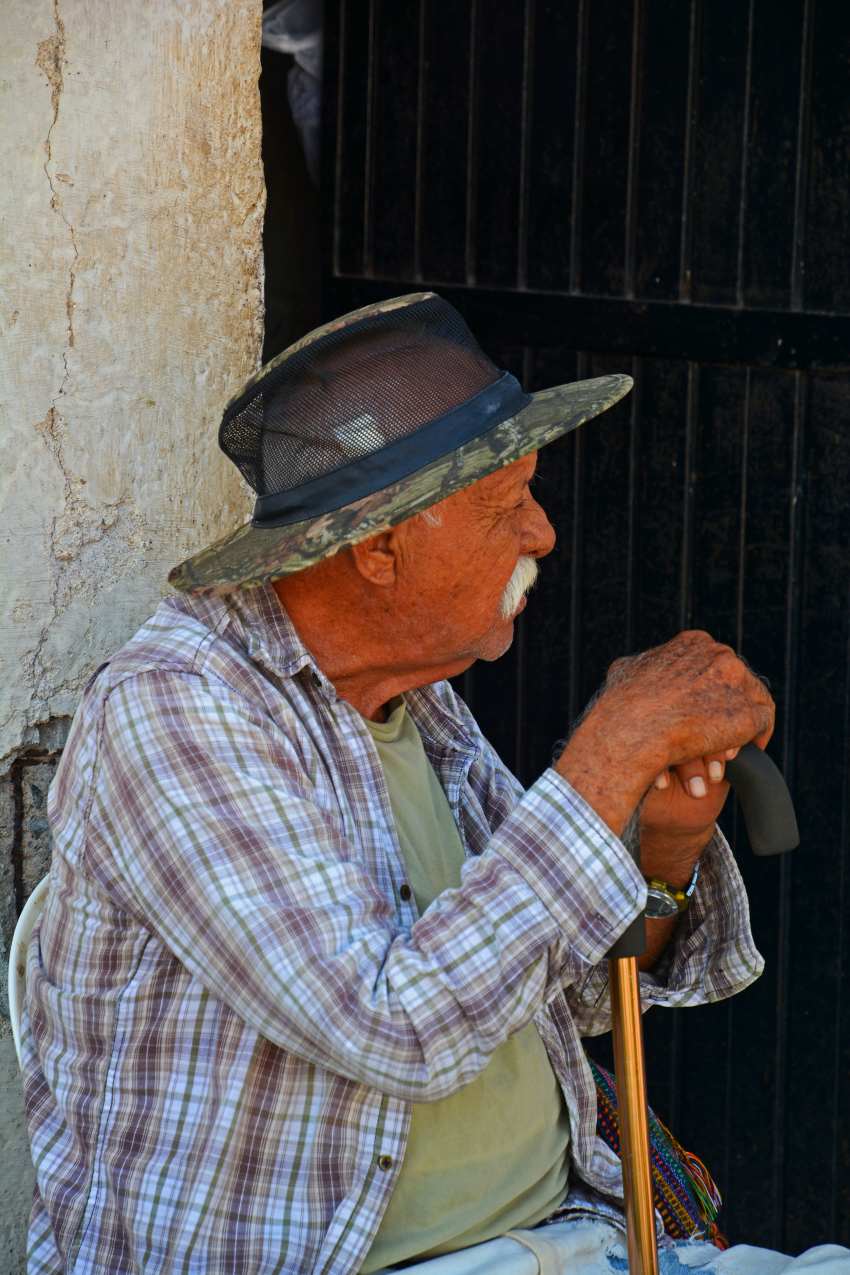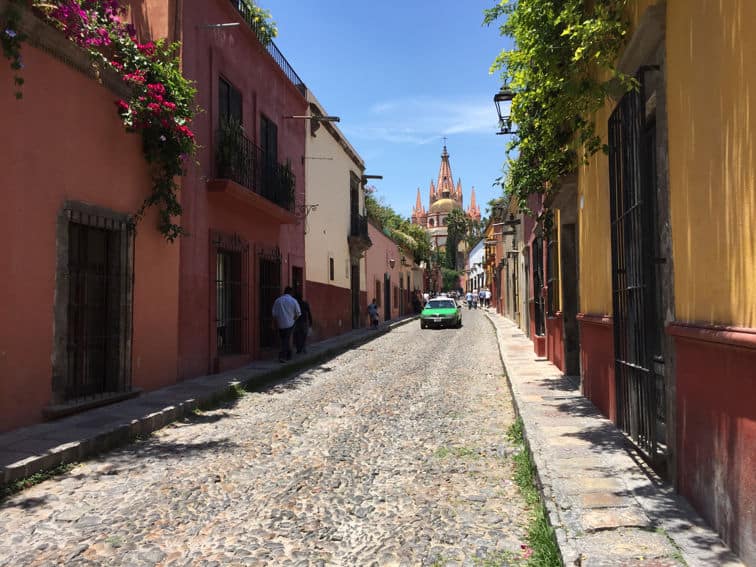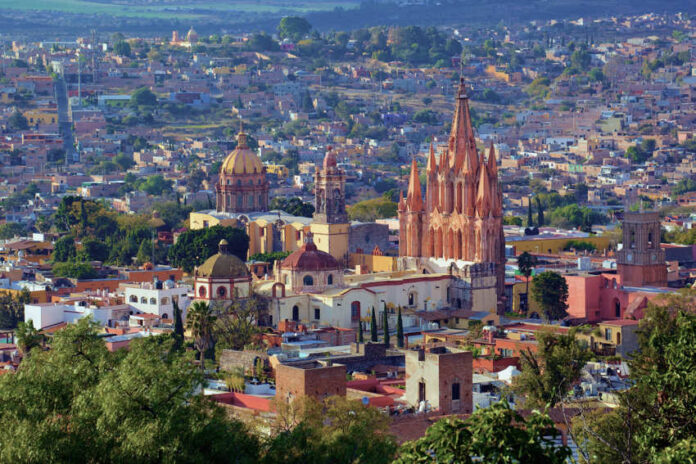Not long ago, when a friend of mine wobbled as he rose from a low stone wall in San Miguel de Allende, I offered him a hand. As he stood, he told me a story about civility in Mexico.
“Gracias,” he said, then added, “I’m okay. But last week, I tripped and was stumbling toward the ground. I’d have landed face-first, but this man caught me. He held me up in a bear hug. He’d been walking with groceries in one hand, his son’s hand in the other. When he saw me coming, he dropped the groceries, let go of his son’s hand and caught me!

“‘Gracias, gracias,’ I said. The man replied, ‘De nada,’ as though catching falling people was something he did all the time. He picked up his groceries, took his son’s hand and walked on. I stood there for a long time — steadying and calming myself before continuing, thinking how grateful I was. I still am.”
Even though the world gives us plenty of reasons to focus on things going wrong — Israel and Gaza, Ukraine and Sudan, hurricanes and horrible fires — I also find myself thinking and saying “thank you.”
While the topic of essential virtues has long been on my mind, I hadn’t thought — except in passing — about the particular virtue of gratitude. That recently changed.
For starters, I thought about it when my wife Celia and I spent a couple of weeks babysitting our grandkids, encouraging them, especially the 3-year old, to say the magic words: “may I,” “please,” “thank you,” and “you’re welcome.” Secondly, I’ve thought more about gratitude as I age, maybe because the alternative would be an unhealthy bitterness and resentment over my aches, pains and failing body.
And a major impetus to my thoughts on gratitude have been my three-month-long winter vacations in San Miguel de Allende, Guanajuato, and the marvelous civility of the city’s people.
The last six of the 10 years we’ve come to San Miguel, we’re barely settled into our rental before Celia begins to look for next year’s place because “in Winnipeg, I’m stuck inside during the winter,” she says. “But in San Miguel, I come alive!”

She is deeply grateful for the opportunities San Miguel de Allende affords her to participate in the culture, and in a community where there’s graciousness and civility at every turn — literally and figuratively.
There are no traffic lights or stop signs in the heart of San Miguel de Allende. In Winnipeg, where we live in Canada, drivers and pedestrians move in accordance with the rules we were taught — with traffic lights and stop signs to help us follow them. We’ve come to assume that without these, there’d be chaos and accidents galore.
Well, there’s certainly traffic in San Miguel de Allende: buses, scores of green-and-white taxis, motorcycles, quads and cars — especially on weekends, when people drive in from Mexico City. The streets are often congested with traffic. But, remarkably, we don’t see accidents. And, just as remarkably, we rarely hear horns.
A very small number of streets in San Miguel are paved in ways that we’re used to in Winnipeg. But most of the city’s streets are stone and cobblestone, usually very rough — hard on a car’s shock absorbers. That, plus the usually narrow streets and a plethora of speed bumps, causes drivers to proceed slowly and carefully, in keeping with a set of unspoken rules.
The first of these rules is that automobiles should defer to pedestrians. A second equally important principle seems to be that we practice civility: there’s little or no competition to be first into the intersection. Drivers get to a corner that, in other cities, would have stop lights or signs determining priority and, finding none, defer to the driver who arrived first or at about the same time.
“It’s your turn,” waves the one who thinks himself second in line, to which the presumed first person often mouths “gracias” as he turns the corner.
And I think to myself, “How gracious!”
It’s not just that there’s an alternative set of rules. It runs much deeper. Things in San Miguel de Allende operate in accordance with values and principles different from what we’re used to, including especially patience and deference, the Golden Rule and gratitude.
The principles at work for drivers also apply to pedestrians. As I navigated the city’s narrow sidewalks on my first trip here, I noticed that people coming toward me stepped off the sidewalk and moved into the street so I could remain on the sidewalk. A simple act of etiquette, but a meaningfully sweet one, and I thought to myself, “How gracious!” As we passed, I said “gracias” while they shrugged and mumbled something like “de nada.”
But it’s not nothing. When others give me the right of passage — and I thank them — we contribute to a positive community ethos. As with driving, there are no formal rules for what transpires.

It’s rather an appreciation of several unspoken and loosely applied but nonetheless effective guidelines: Women take precedence over men. Older people and those who have trouble walking are considered before the younger and more mobile. And people walking in the same direction as traffic are privileged over those walking against it, as are people accompanied by young children.
The words “grateful” and “gratitude” come from an archaic Latin adjective, “grate,” meaning “thankful.” They form all or part of several English words, including “congratulations,” “grace,” “gracious,” “gratify,” “gratuitous” and “gratuity.”
According to psychologist Robert Emmons, gratitude has stages: First comes a state in which we affirm that, all in all, life is good. Then, comes an acknowledgment that we have received something that gratifies us, both by its presence and by the effort the giver put into choosing it for us — the latter a recognition that sources of this goodness lie outside oneself. Having recognized that goodness, we know whom to thank for it.
We recently saw the play “Tuesdays with Morrie.” Morrie’s several “life lessons” are profound, all worth considering, perhaps heeding. But what struck me as most important, even as he struggled to find breath, even as he moved inexorably toward death, was his focus on the abundance — the blessings — of and in his life. He was, in a word, “grateful.”
During his last television appearance, just prior to his death in 1973, the great José Alfredo Jiménez introduced his last song, “Gracias,” to thank the public for all of the affection they’d shown him throughout his career.
“If I had the means,” Jiménez sang, “I would buy myself another two hearts, to make them vibrate and fill your souls with dreams again.”

At a men’s breakfast in San Miguel, the topic for discussion was the music that we find most meaningful. I chose the song “Gracias a la Vida,” a beautiful tribute to the blessings and challenges of life by the Chilean singer-songwriter Violeta Parra.
The lyrics highlight the gifts of sight and hearing, of language and communication. They acknowledge the gift of mobility, our ability to travel to and experience cities and landscapes. They point to the achievements of the human brain as well as our ability to distinguish between good and evil. They value laughter and tears, joy and sorrow, life’s ups and downs, as well as the power of light to illuminate the path of the soul, of the singer and of the one she loves. The closing lines celebrate a sense of unity and shared experiences with others.
The song brilliantly encourages me to cherish, and to be grateful for, the multitude of experiences and opportunities that life in San Miguel de Allende — that life in general — affords me.
Bruce Sarbit is a San Miguel de Allende resident.
